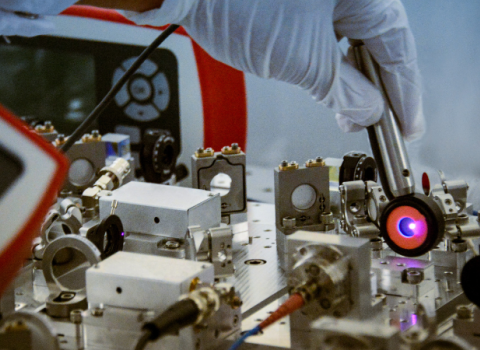A £9.6m EPSRC grant will boost Imperial, Manchester, and Leeds research into new nanoscale approaches to functional materials and quantum computing.
The project, known as Nanoscale Advanced Materials Engineering (NAME), aims to revolutionise the design and delivery of materials that can be tuned at the nanoscale to perform specific functions, boosting technologies such as masers (the microwave form of lasers) and quantum computers.
The researchers from the University of Manchester, Imperial College London, and the University of Leeds aim to exploit the power of editing materials at the smallest scale to create designer materials for quantum technologies. In doing so, they aim to shape the UK and international advanced functional materials landscape.
NAME is supported by a £9.6M EPSRC Programme Grant with a further £2M in support offered by its 20 industrial and international academic project partners.
Functional materials
Functional materials can be created by adding atoms, known as ‘doping,’ and taking them away, which leaves ‘vacancies’, of different elements, to tweak their electronic and thermal properties. For example, the Imperial discovery of room temperature masing in diamond works precisely because there are nitrogen vacancies in the diamond. Further applications range from ultra-low noise amplifiers to compact and very stable clocks.
The researchers say this will be particularly useful in controlling material properties which have to date proven difficult to exploit fully, like quantum mechanical spin, and to control states of systems predicted but not yet directly experimentally observed, like topological surface states.
Ultimately, the researchers hope to come closer to developing quantum bits (qubits) in materials, which are a pre-requisite for creating quantum computers. Quantum computers can process information and perform calculations far faster than conventional computers, but their development has so far been hampered by the difficulty of keeping the qubits stable.
Principal Investigator Professor Richard Curry from the University of Manchester said: “I’m delighted that this award brings together leading researchers to address key material challenges in the areas of nanoscale photonics, energy and quantum materials. Our ambitious programme of research, backed up by world-leading capability in materials growth, functionalisation and modification, will place the UK at the fore in developing technologies based on these advanced materials.”
Imperial lead Professor Neil Alford said: “We are really excited about continuing our growing research in materials for quantum technologies and collaborating with our industrial project partners. NAME will help us bring these technologies closer to being produced on an industrial scale, and therefore to our homes.”
Imperial will contribute to exploring new sources for inserting atoms into materials led by Dr Christopher Gourlay at the Department of Materials, and studying new materials for quantum technologies based on the recent discovery of room temperature masers by Professor Alford and Dr Jonathan Breeze, also at the Department of Materials. The work will be conducted in the new Henry Royce Institute facility under the supervision of Dr Peter Petrov at Imperial’s White City Campus.
About the funding
The university partners have already established the required substantial infrastructure and state-of-the-art facilities through investment from the Henry Royce Institute via the EPSRC. The programme grant will provide the resource to assemble the wider team required to deliver the NAME vision, including UK academics, research fellows, and postdoctoral researchers – particularly early career researchers, supported by PhD students funded by the universities. The programme grant also has significant support from wider academia and industry based both within the UK and internationally.
This article was first published on May 5 by Imperial College London.





 A unique international forum for public research organisations and companies to connect their external engagement with strategic interests around their R&D system.
A unique international forum for public research organisations and companies to connect their external engagement with strategic interests around their R&D system.